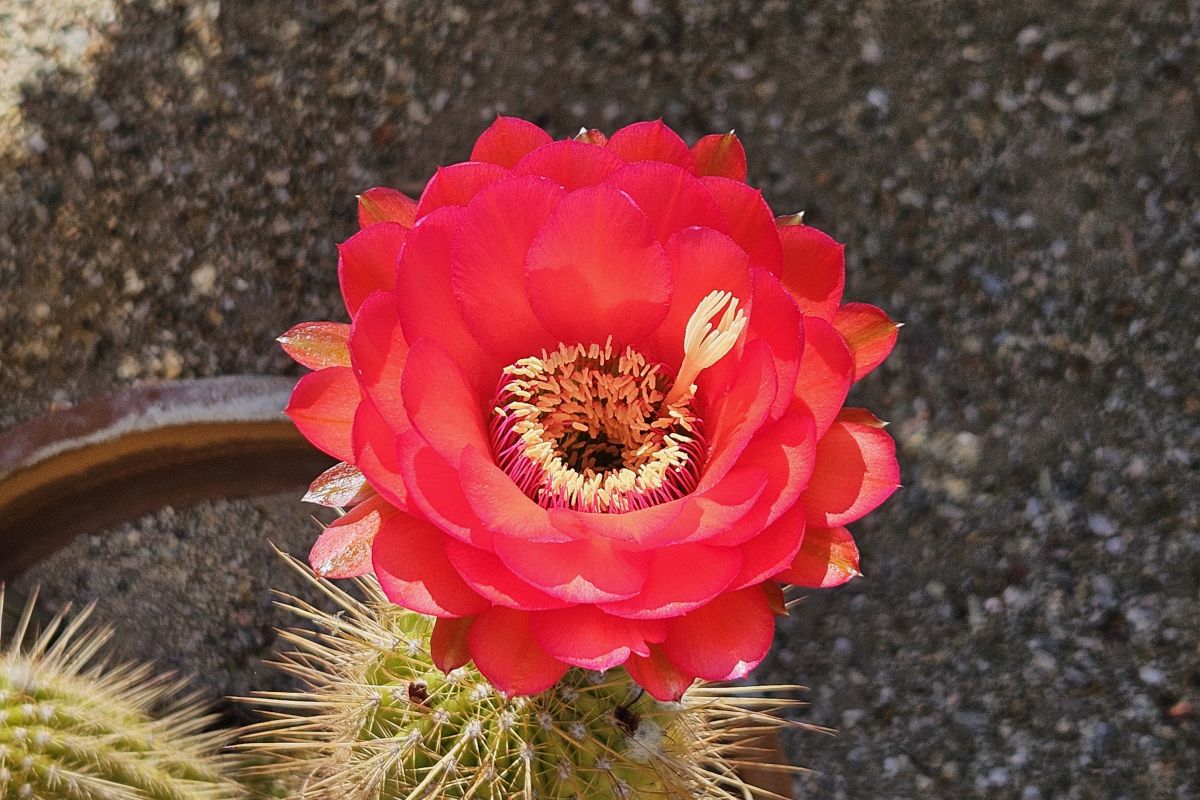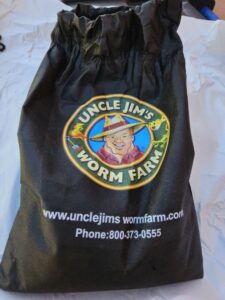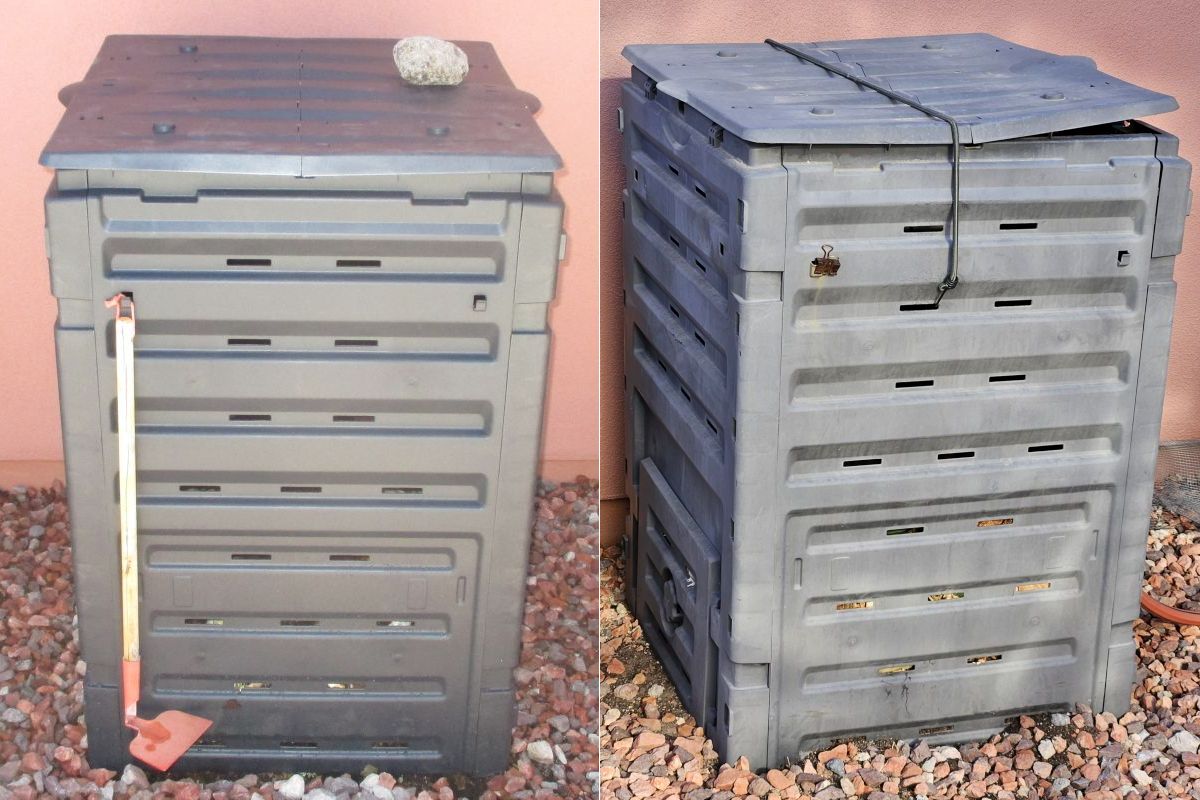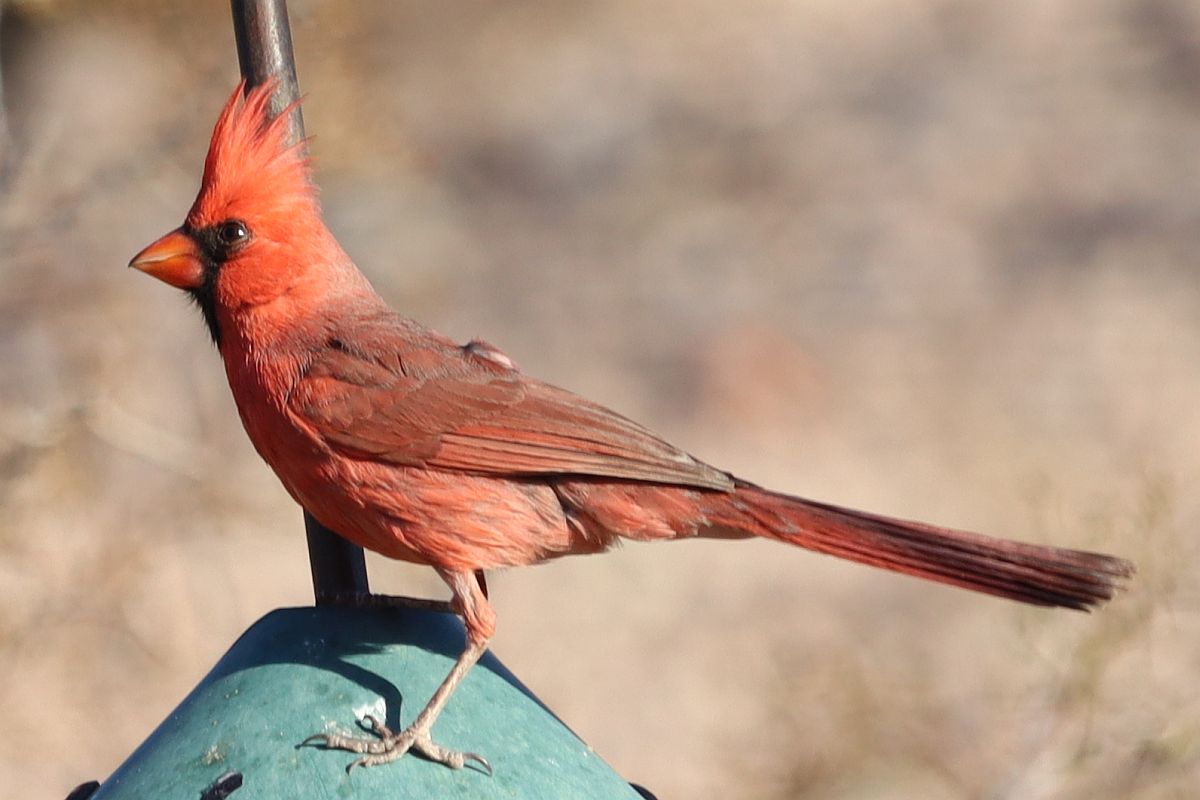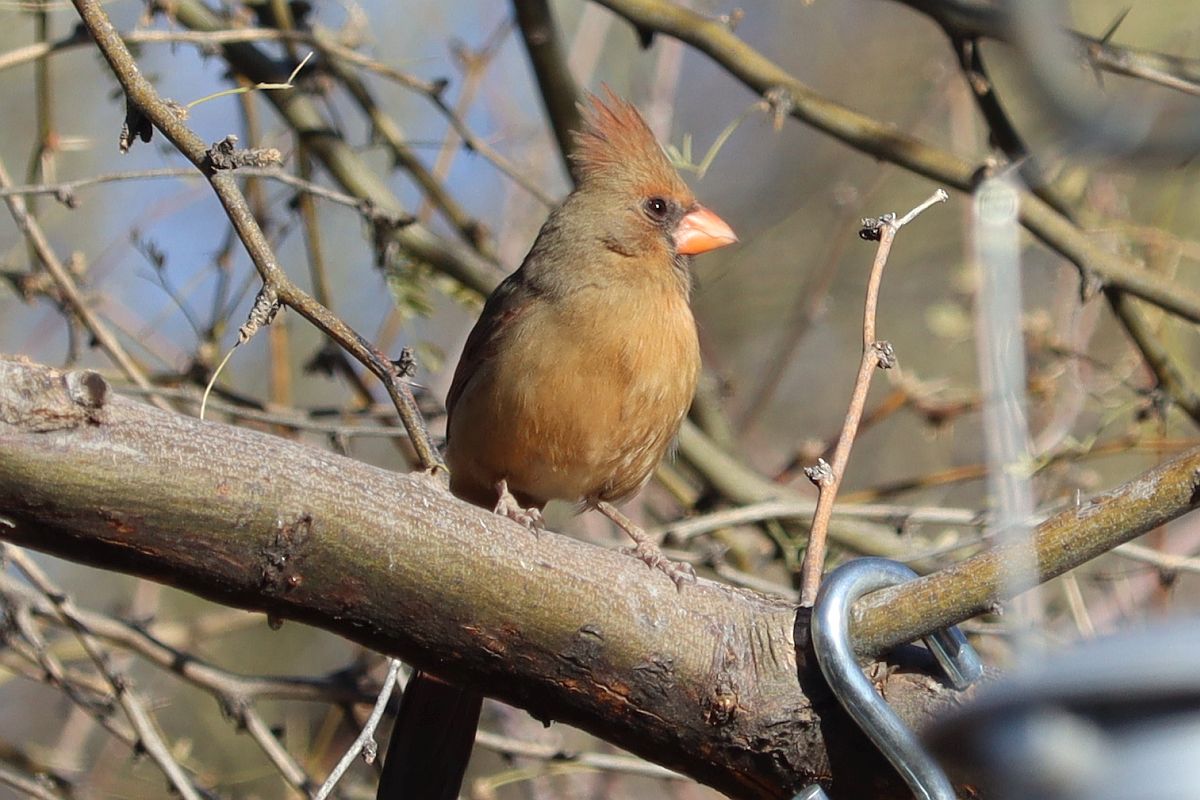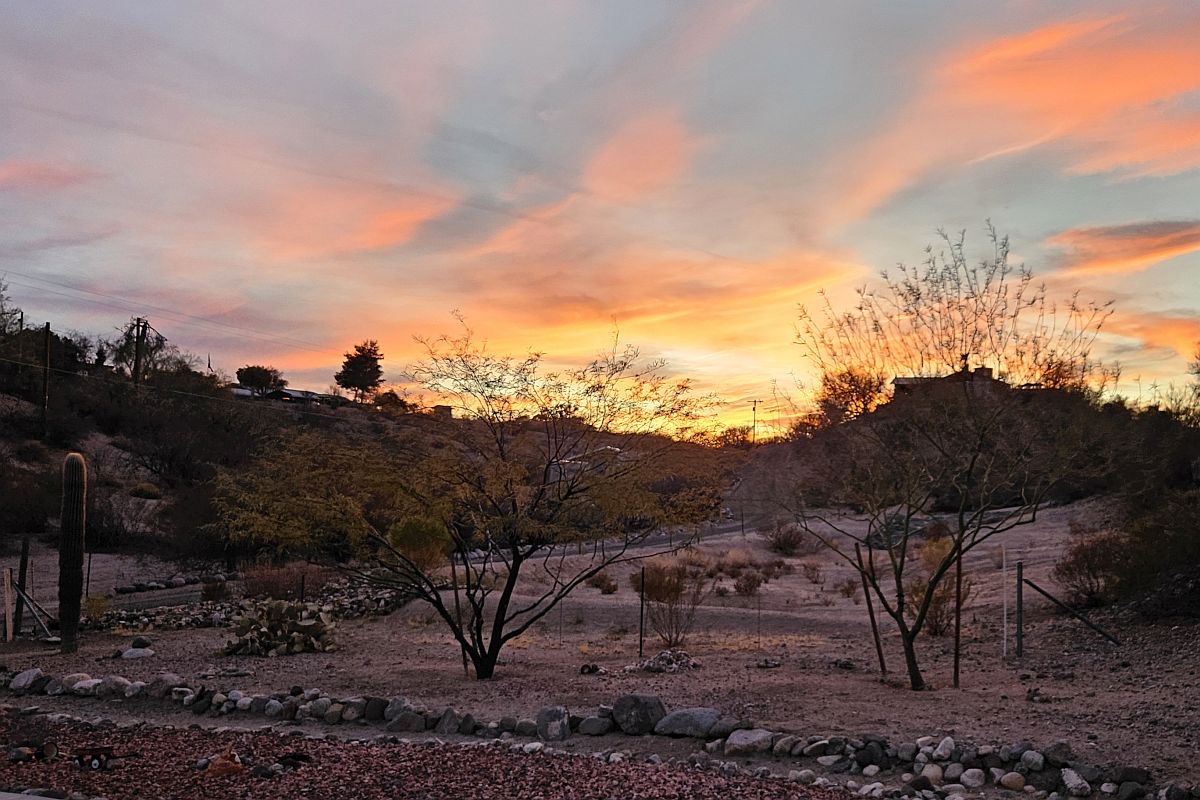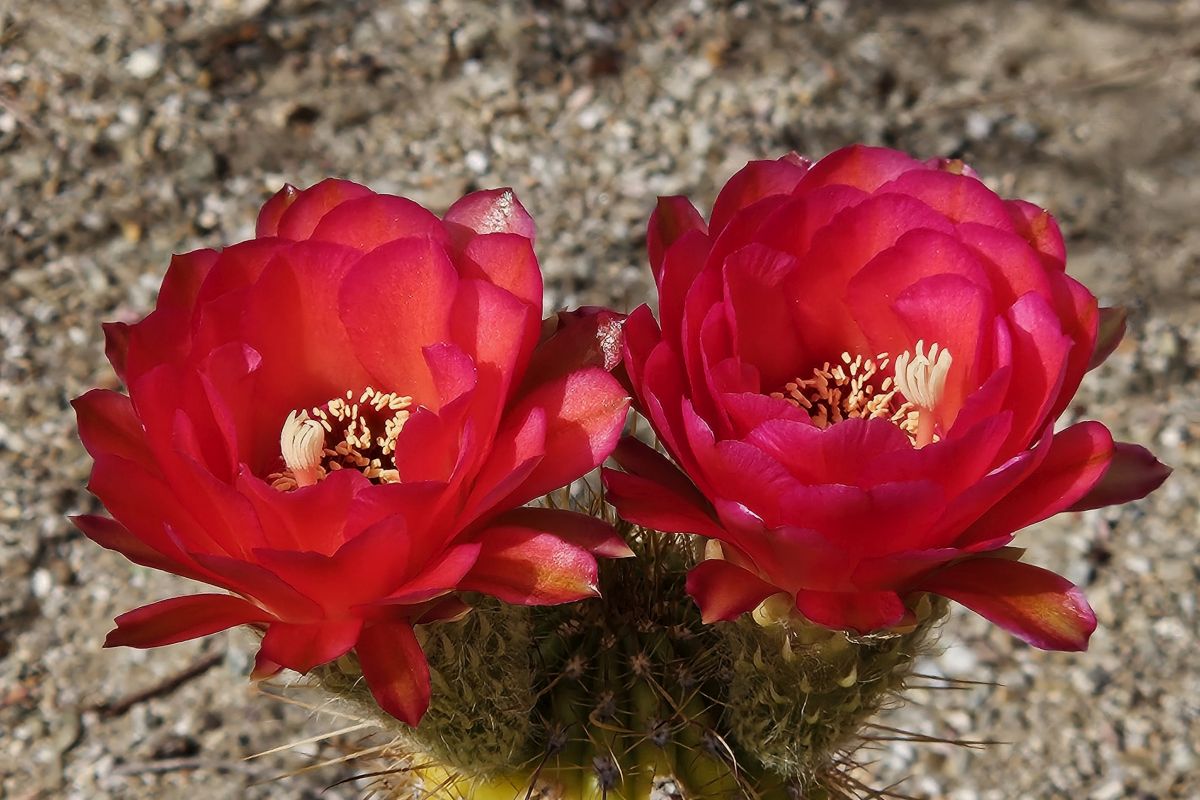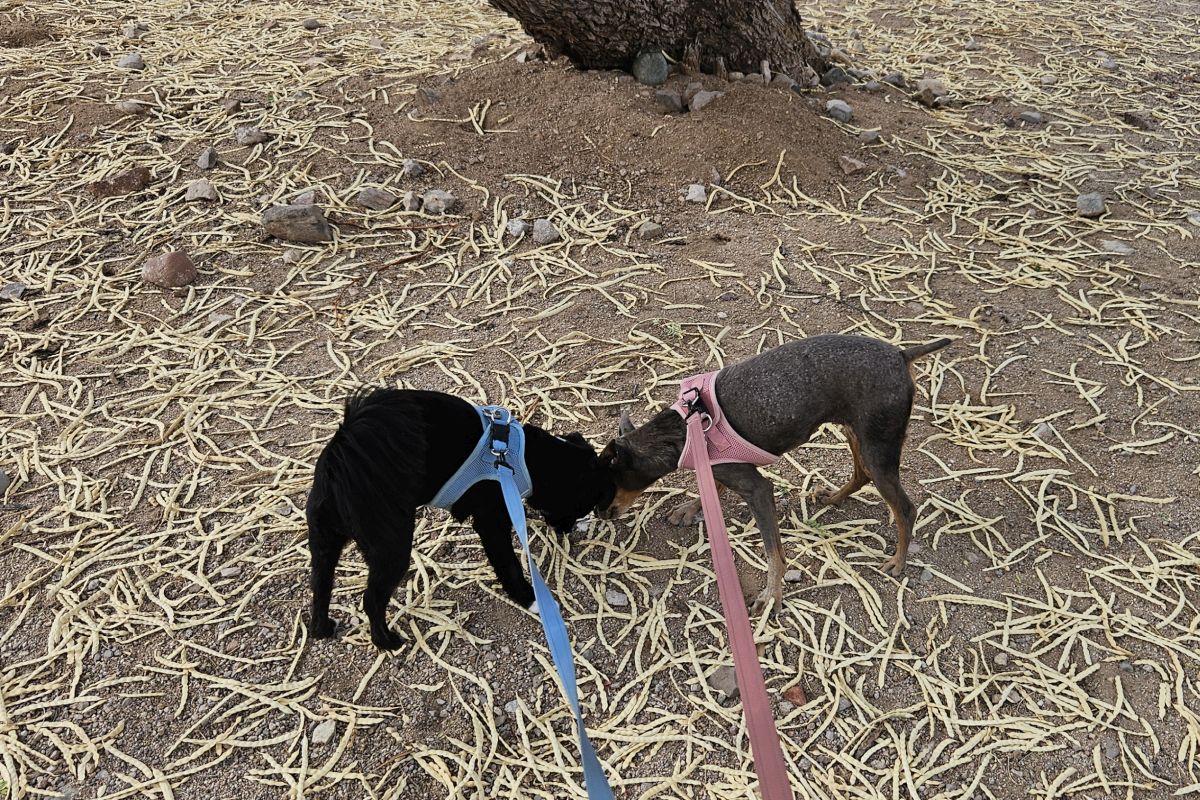Because we were away from home through late March and over half of April, we thought that we might miss some of the spring cactus flowers opening. We already had flower buds on several of our xeriscape cacti when we began our trip to Texas. Fortunately, we didn’t miss too much since a lot of flowers are now open. We got busy with the cameras and have some photos of some of the open flowers here.
This first pair of flowers is on a beavertail cactus (Opuntia basilaris) that is growing on the west side of the property:
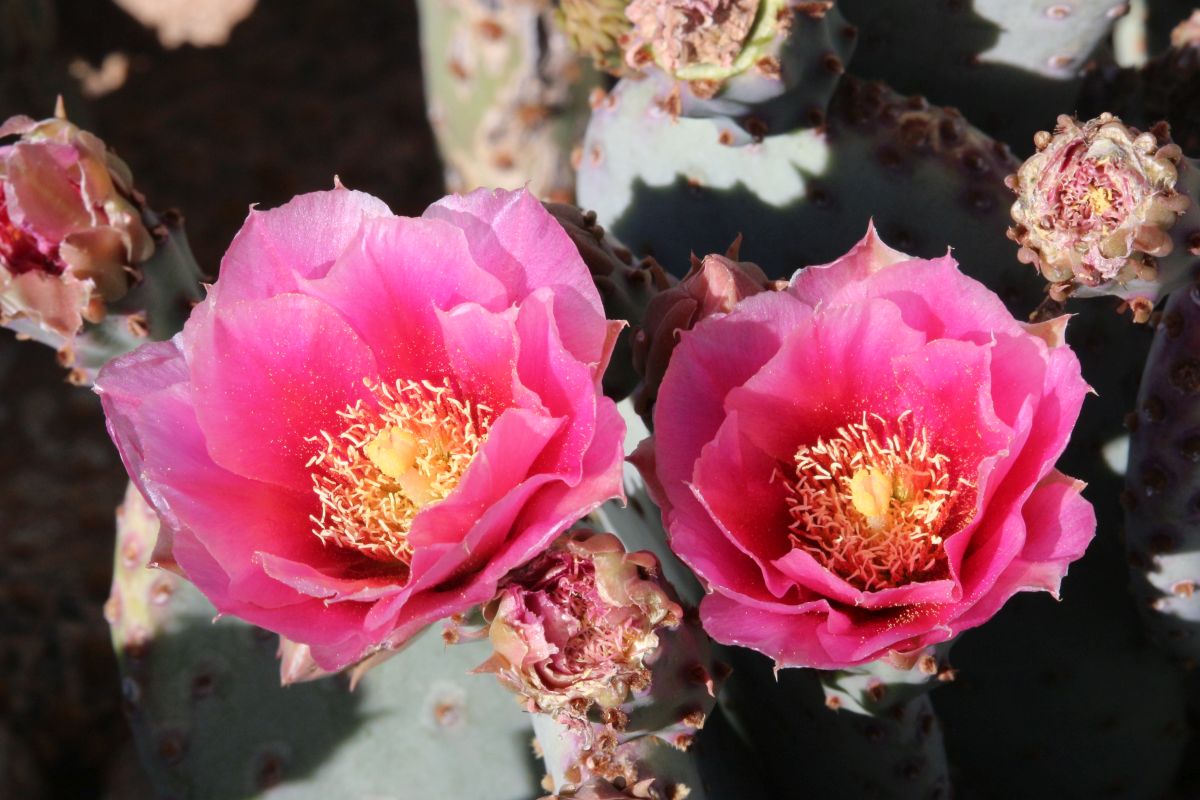
Next, we have one of the first flowers to open on one of three Blue Palo Verde (Parkinsonia florida) trees on our property. The Blue Palo Verde trees were planted here since we have been in Arizona, but there are some wild Foothill Palo Verde (Parkinsonia microphylla) trees up in our back lot. Here is the one flower I saw today:
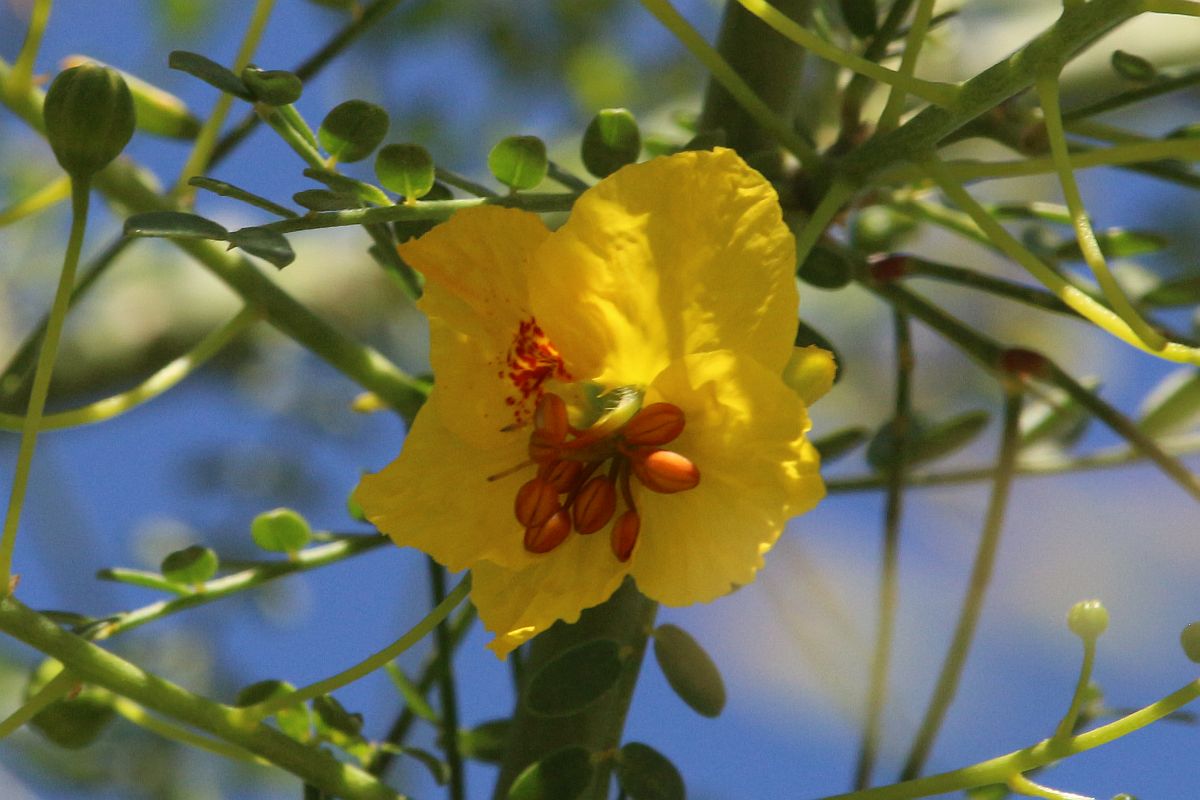
There are several Buckhorn Cholla (Cylindropuntia acanthocarpa) growing on the property. This flower is one of many more to come on the several cacti around here:
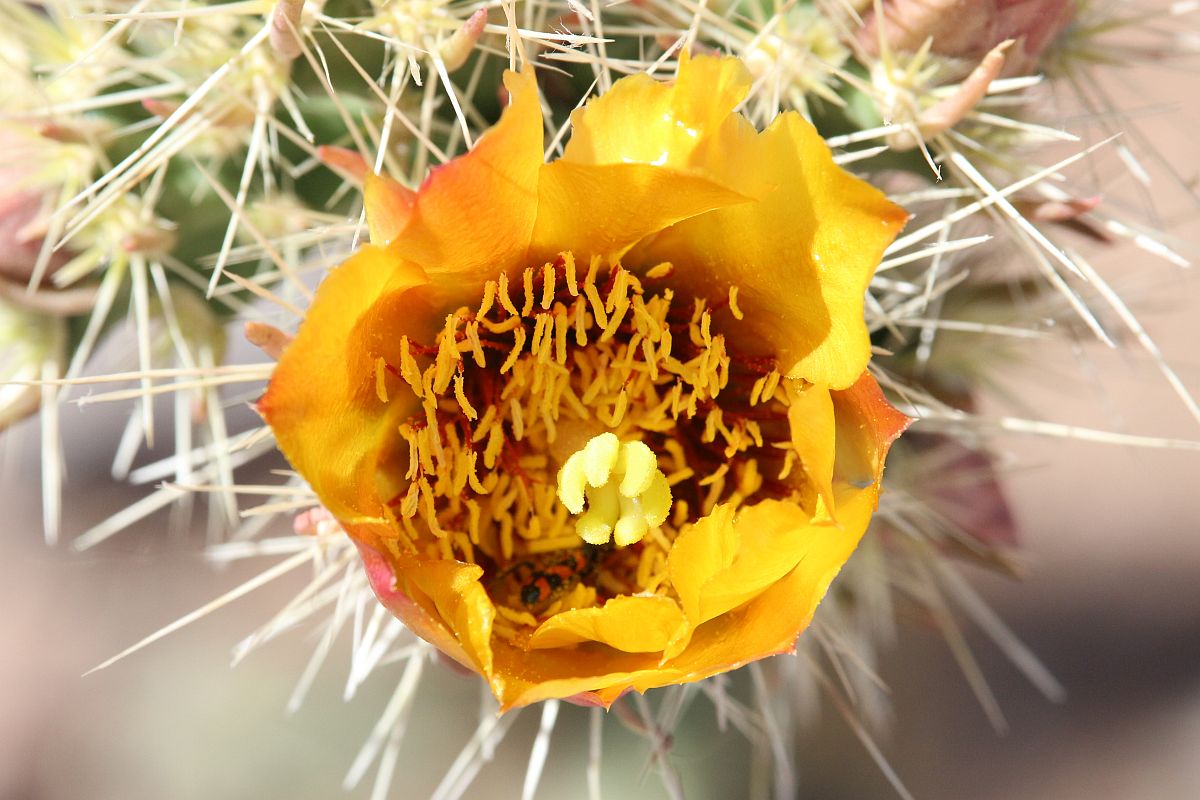
Desert Marigold wildflowers (Baileya multiradiata) are growing all around us. This batch is off of the property, just to the west of us in the catch basin:
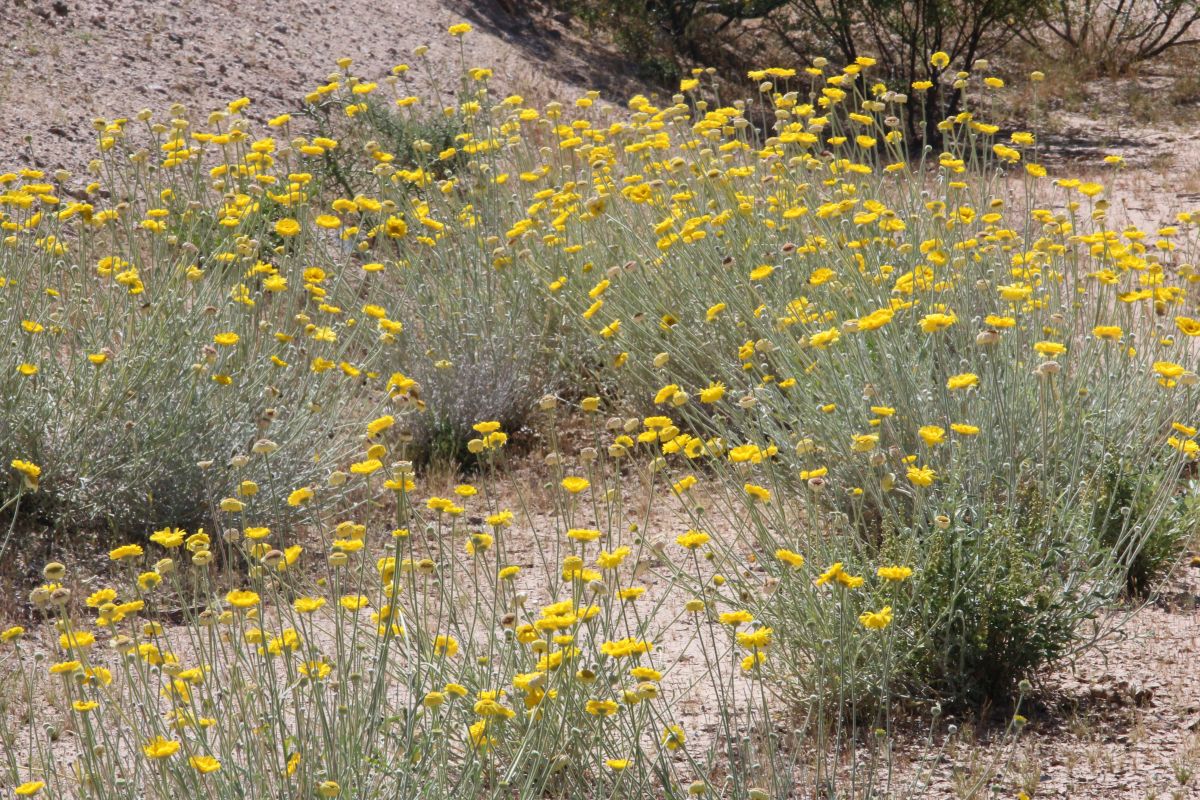
And finally, The Hedgehog Cacti (Echinocereus Engelmannii) out front, have had most of their flowers open before we got home to see them, but there are a couple of buds still ready to open and this flower was open today:
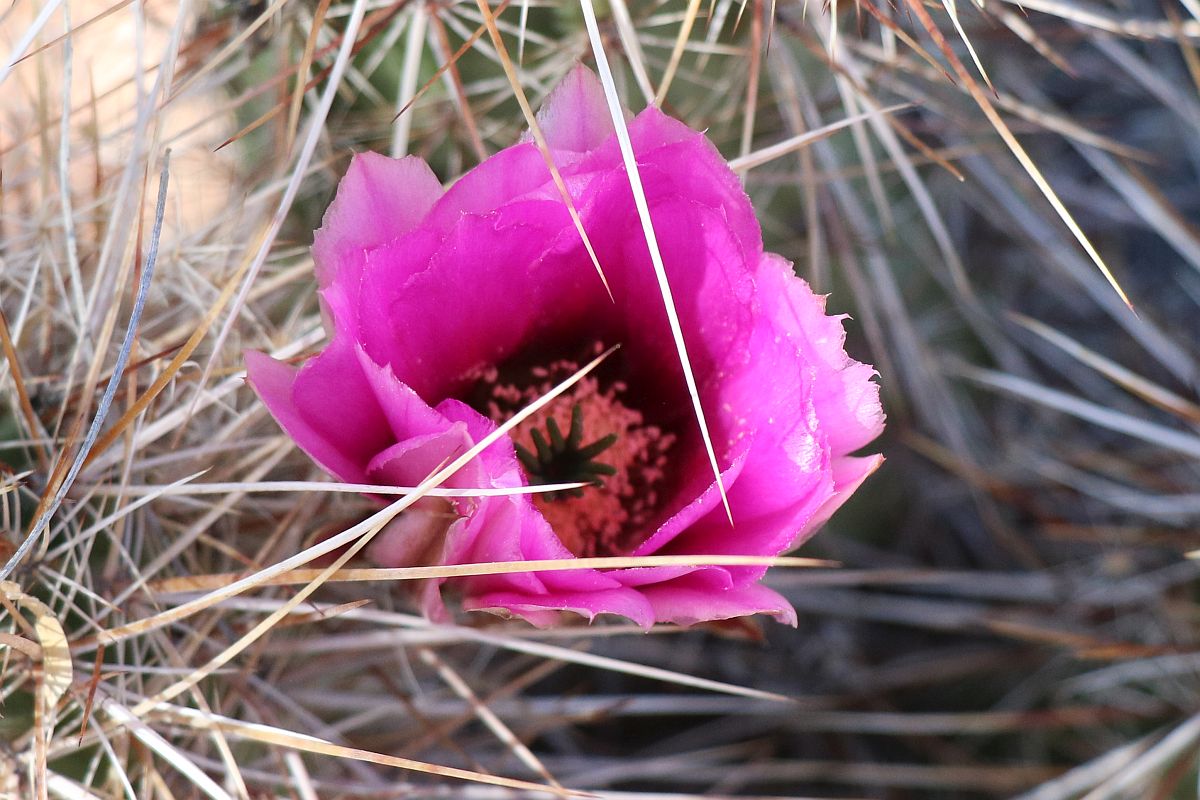
We hope that you have enjoyed seeing these flowers as much as we have. We also are looking forward to enjoying the May and June flowers that likely will come. Watch for more cacti and other flowers soon.

